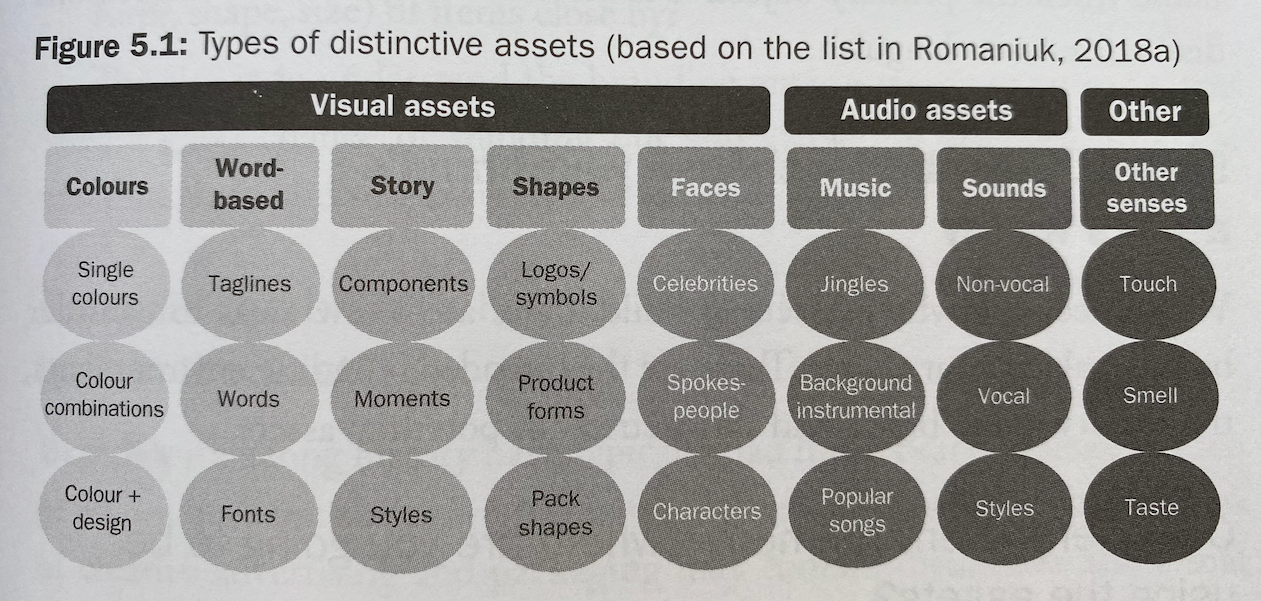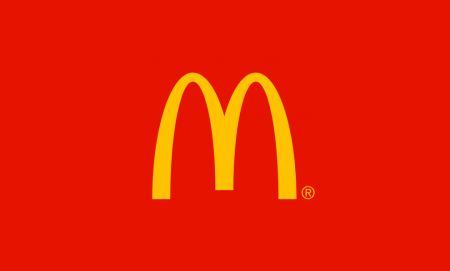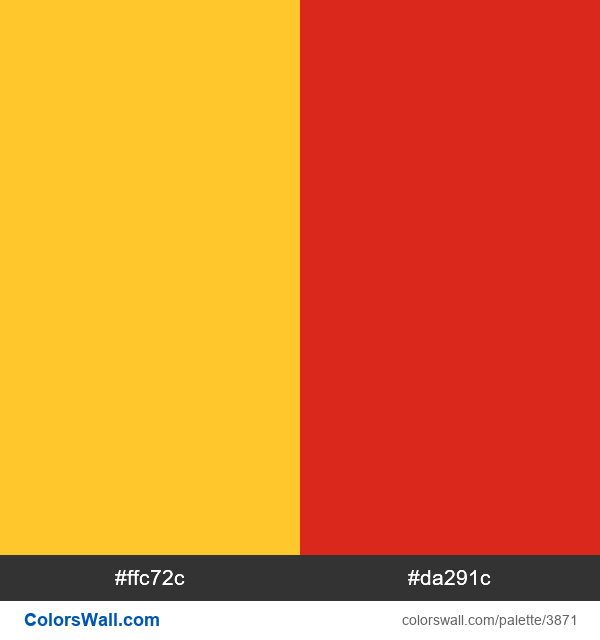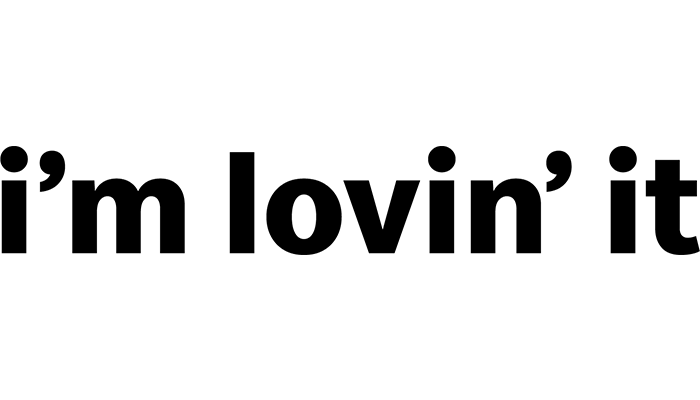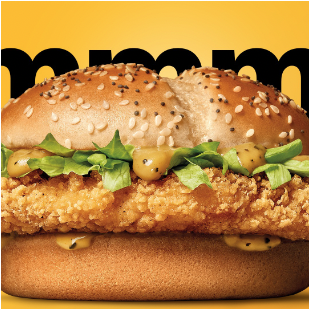Twitch as the Unexpected Player: Why Your Brand Should Pay Attention
The platform Twitch.tv—unlike the typical social media channels most of us use daily—has its own cultural nuances and is defined by the type of content it hosts. Twitch focuses primarily on live streaming, meaning real-time broadcasts delivered straight to viewers’ screens. So-called “streamers” create media content and distribute it online using streaming technology and software for audiences who actively seek out that kind of content.
Once upon a time, there was a guy named Justin...
Twitch.tv—originally known as Justin.tv—was created as a platform for sharing one’s personal daily life via live stream. The idea came from its founder, Justin Kan (yes, he really named the network after himself), who decided to literally strap a camera to his head and document his life in real time—24 hours a day, 7 days a week—for anyone to watch.

In 2007, the only active channel on the platform belonged to Justin himself—no one else could register. But before long, the digital curtain dropped, and countless user-created channels emerged, with people streaming and generating user-generated content (you can read more about UGC on our blog too ).
Today, Twitch.tv is the most successful live-streaming platform in the world, holding a 73% market share. In 2023 alone, viewers watched a total of 21.4 billion hours of live content, with 240 million unique monthly visitors. In the Czech Republic, the numbers are smaller but still notable—with around 45,000 unique viewers each month. Statistics show that 3 billion people globally play video games—that's about 40% of the world's population. With such a massive audience, it's no surprise that brands are eager to claim a share of attention for their campaigns on a platform primarily built for gamers.
How Twitch.tv Hits the Target Audience
What does marketing look like on Twitch? One obvious answer is unskippable ads—the kind we all love to hate. On Twitch, these often appear right in the middle of live streams, where the platform’s algorithm serves tailored ads that viewers must sit through in order to continue watching their chosen content.
What makes these ads clever is how precisely they can target specific audiences. For example, if you’re watching a cooking stream, it’s very likely you’ll see an ad for a new frying pan. Watching a gaming stream? A promo for the latest gaming PC probably isn’t far off. This contextual relevance increases the chance that the ad actually resonates with the viewer.
Beyond that, Twitch also features banner ads, affiliate programs, and influencer sponsorships—just like other social platforms. However, if you want to advertise on Twitch using traditional ad formats, you’ll need access to Amazon DPS (Demand-Side Platform). Unfortunately, this service isn’t available on the Czech market, meaning you can’t launch campaigns directly. Instead, brands must reach out to Twitch and arrange a private media deal.
Advertising Here Is One of a Kind
But what exactly makes Twitch.tv such a uniquely attractive platform for marketers? We’ve touched on it already—but let’s take a closer look.
Every streamer builds their own community of viewers, who tune in based on shared interests—whether it’s cooking, art, or the most dominant reason Twitch exists: gaming. Each streamer maintains direct contact with a niche audience that likely shares their passions. Unlike traditional television or pre-recorded YouTube videos, Twitch viewers can interact with streamers in real time—no need to wait for a reply in the comments. This level of interaction significantly boosts user engagement.
It’s like imagining Rey Koranteng and Lucie Borhyová reading and reacting to live viewer opinions while presenting the evening news on TV Nova. On Twitch, this kind of dynamic interaction is not only possible—it’s essential. And it’s exactly what sets Twitch apart from other social media platforms.
For marketers, the Twitch community presents a valuable opportunity to connect with Gen Z: 41% of users are between 16–25 years old, and another 32% fall into the 25–34 bracket—making up a combined 72%. This rare mix of live content, audience engagement, and demographic focus offers brands a distinct environment where they can truly stand out.
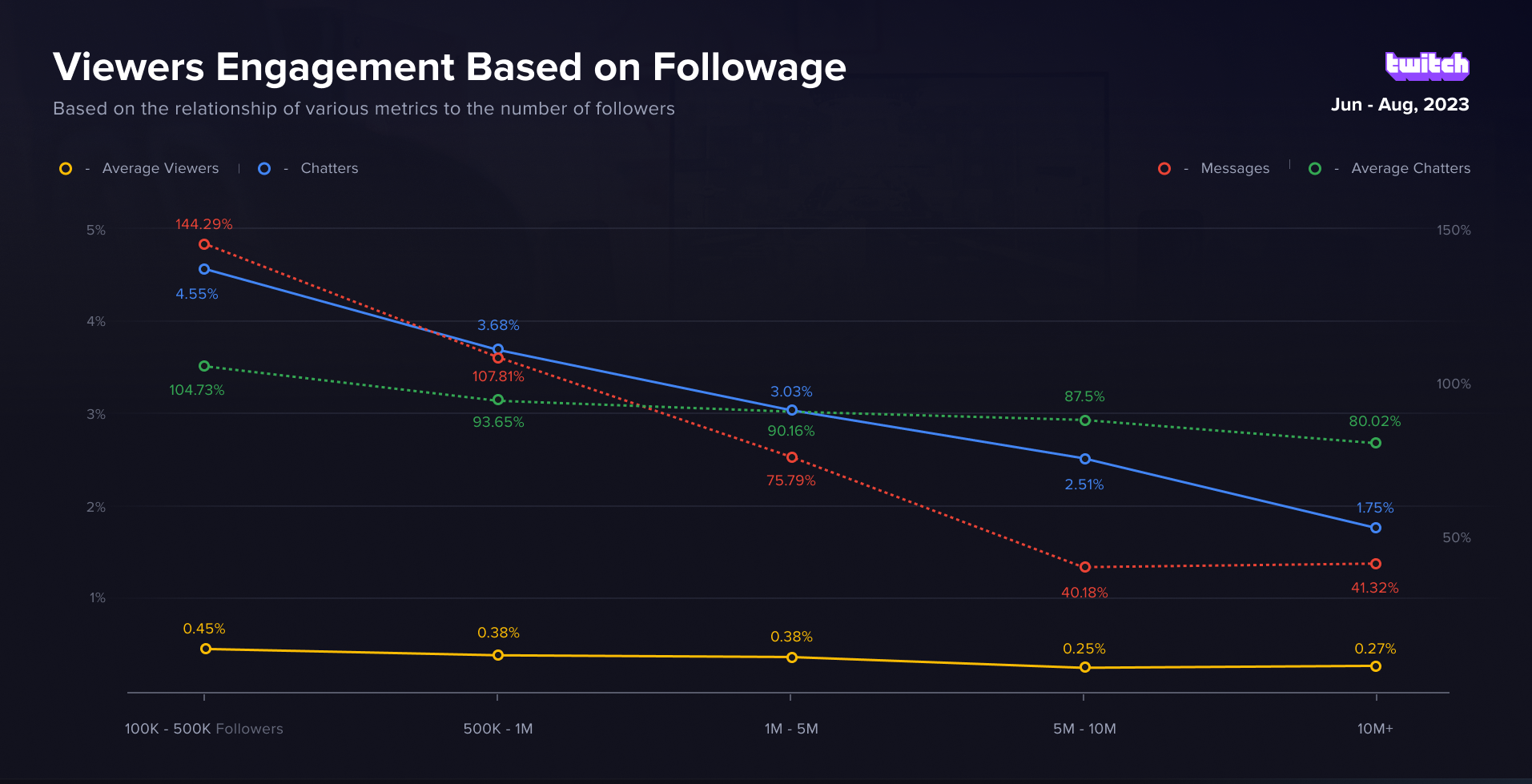
Source: Streams Charts
Take Off the Rose-Colored Glasses
High engagement, a reachable target audience, and strong appeal to younger generations can make brands feel like Twitch.tv is the perfect place to invest their marketing efforts and make a breakthrough. But even here, there are barriers worth considering before integrating this unconventional platform into your strategy.
Brands often have to work directly with streamers to create sponsored content, due to the platform’s targeting limitations—which rely more on the personality of the streamer than on the specific content being viewed. This approach can be more expensive, time-consuming, and produce highly variable results depending on the streamer’s influence and authenticity.
Twitch users are also generally more resistant to traditional advertising formats. Since the platform is built on long-form, live content, ads can feel disruptive. Many viewers subscribe to Twitch Prime or individual streamers specifically to avoid ads altogether. And because viewers are engaged in real-time content, they’re less likely to click away to explore promoted products or services. As a result, while impressions may be high, click-through and conversion rates can remain low.
Finally, it’s crucial to remember that the majority of advertising on Twitch doesn’t come from traditional placements—but from influencer partnerships. This dynamic requires a different mindset, creative strategy, and long-term brand collaboration to be effective.
A Creative Approach to Campaigns
If a brand decides to launch a campaign involving influencer partnerships, the approach is typically more creative than traditional collaborations. It considers the communities the brand wants to engage with—and how to best connect across different streamers. These partnerships are especially common among gaming companies, tech brands, supplement providers, and energy drink labels.
Brands can leverage branded extensions, product placements, event sponsorships, or even organize their own tournaments and community challenges. On-screen banners and custom overlays with distinctive brand elements can be seamlessly integrated into the content being streamed.
Unlike paid ads, these collaborations offer continuous brand exposure throughout the stream—not just a fleeting 10-second spot—making them more immersive and impactful for engaged viewers.

Red Bull’s product placement in the form of a mini-fridge and drinks, prominently displayed in the commentator studio of a prestigious Valorant esports tournament.
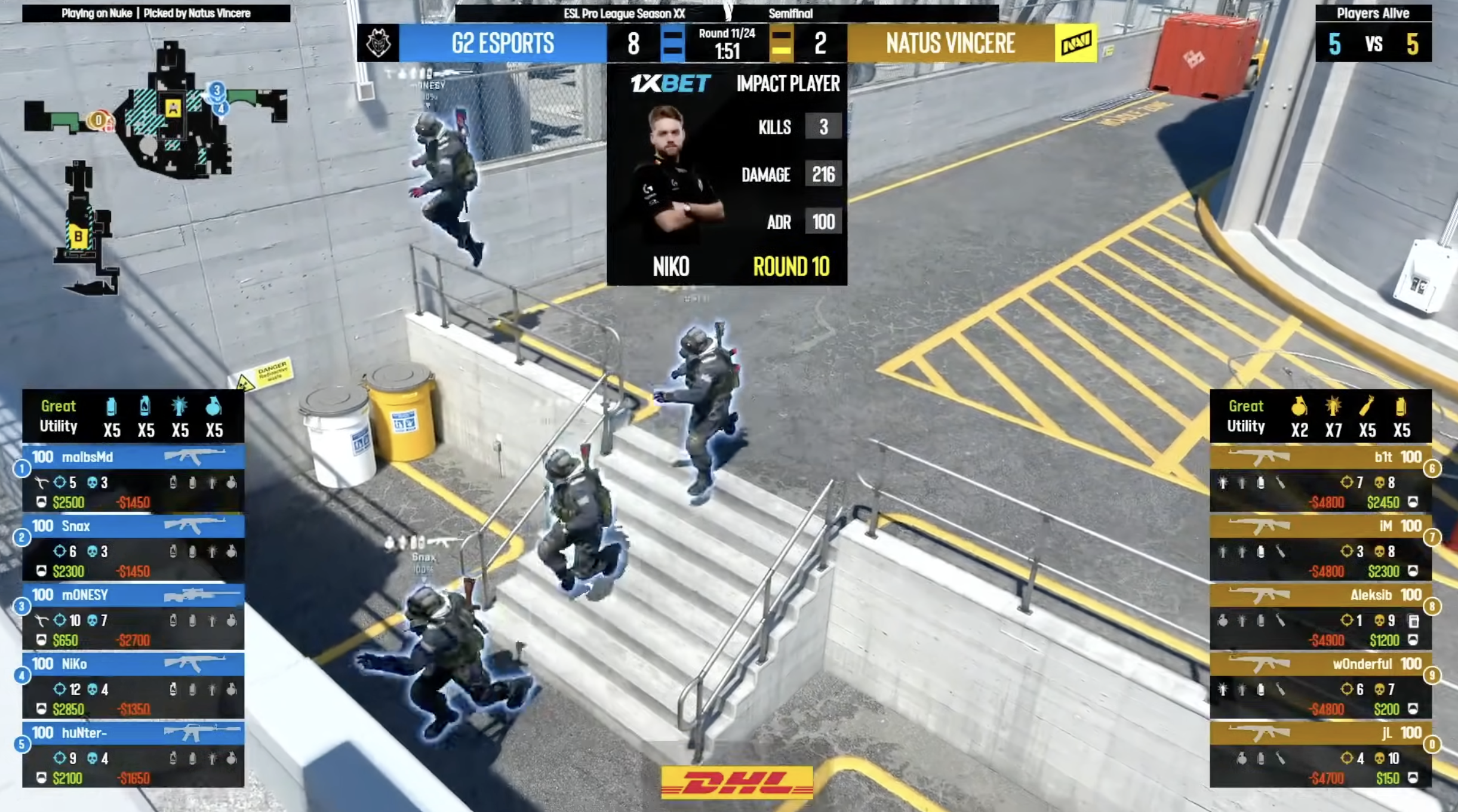 DHL banners appearing at the bottom of the stream during the global ESL Pro League tournament in CS2. You can also spot 1xBET as the official betting partner.
DHL banners appearing at the bottom of the stream during the global ESL Pro League tournament in CS2. You can also spot 1xBET as the official betting partner.

A gaming show and World of Warcraft quiz hosted by SecretLab during the Race to World First event, where player guilds compete against each other. Other partners included Alienware and Monster Energy. Banners from Coinbase were visible, along with product placement—chairs, laptops, and energy drink cans featured in the background.
Louis Vuitton, Red Bull, Spotify, Coca-Cola... and Komerční banka?
One place we can look for inspiration is past events that have involved brands—both global and local. Before we dive into the Czech scene, let’s take a look at some of the major campaigns that made waves on Twitch.tv.
Twitch.tv hosts a wide variety of tournaments each year. One of the biggest is the League of Legends World Championship, organized by Riot Games. Among its most notable sponsors are luxury brands like Louis Vuitton, Mercedes-Benz, and even Tiffany & Co.—a clear sign that high-end labels are ready to invest in gaming culture when the audience and cultural fit are right.
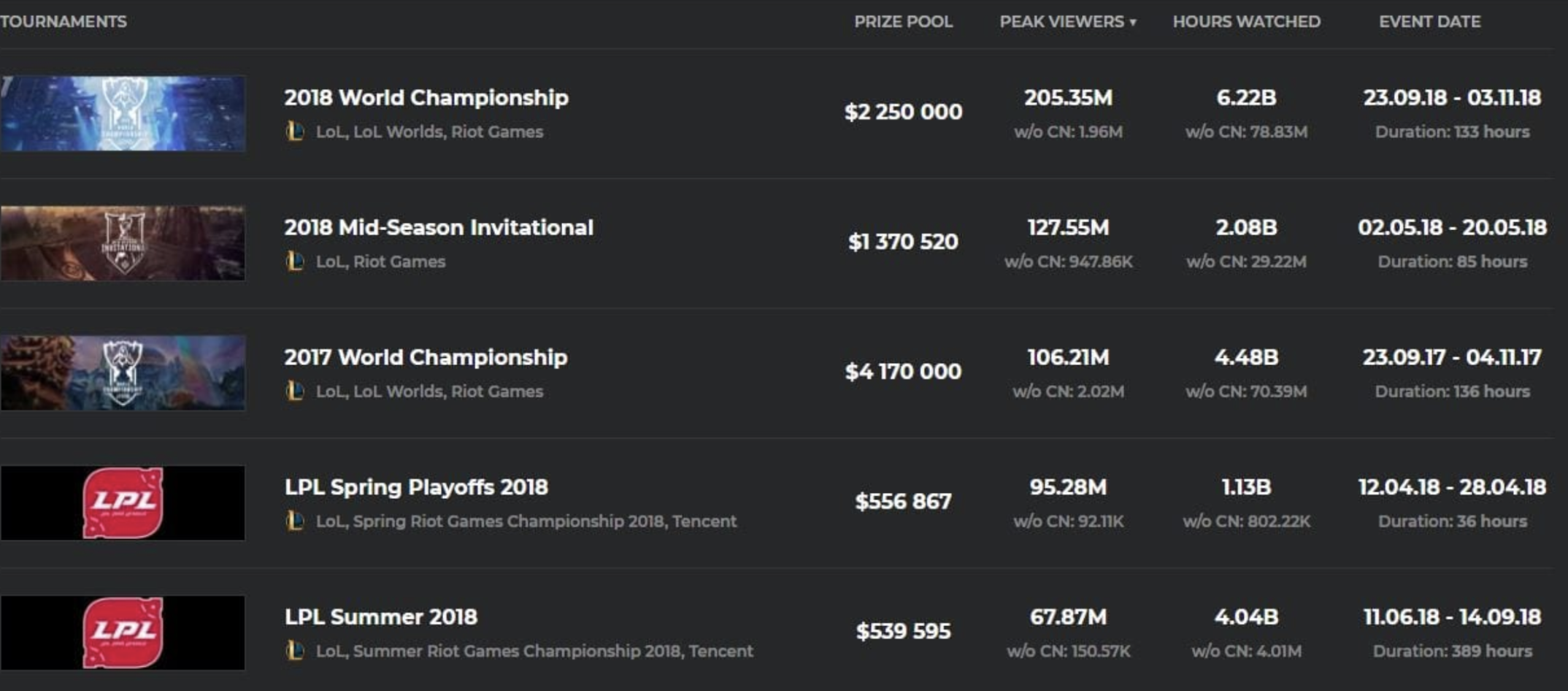
The League of Legends World Championship tournament recorded 205 million viewers worldwide and 6 billion hours watched in a single year.
Amazon Prime Gaming was the most-mentioned sponsor of the tournament, appearing over 35,000 times in chat. Viewers could earn limited in-game items and merchandise each day of the event simply by typing “!prime” to enter a giveaway. Louis Vuitton and Tiffany & Co. created buzz around the League of Legends finals by designing the championship trophies for the winners.
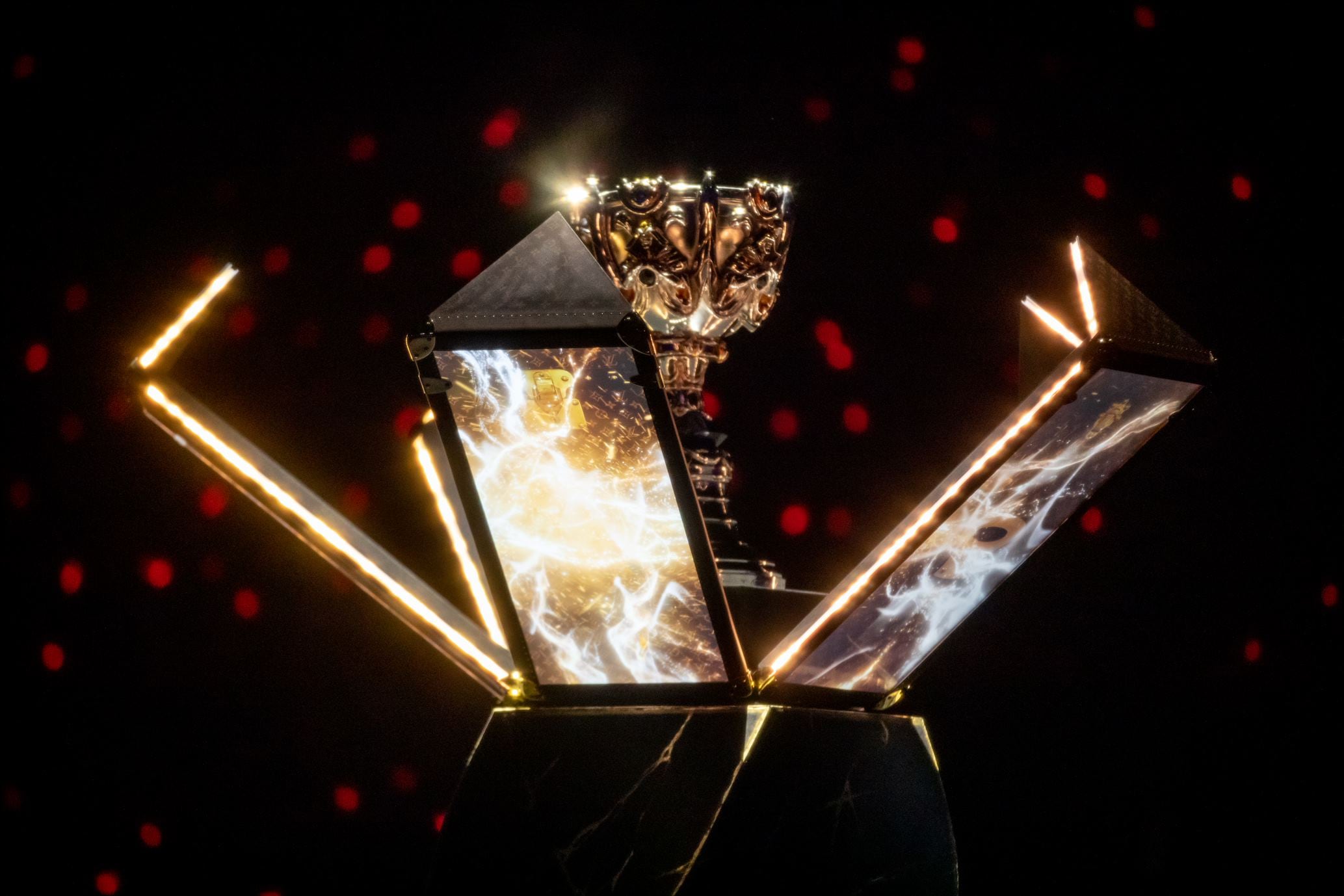
At the top of the individual streamer rankings stands Spanish creator Ibai Llanos Garatea, who has hosted the amateur boxing event La Velada del Año annually since 2021 on his Twitch channel. The third edition launched with major sponsorship from Red Bull, Spotify, and Coca-Cola. By Twitch standards, the event was a massive success—watched by 3.7 million Spanish-speaking viewers simultaneously, alongside a live audience in a 70,000-seat arena. While these numbers may seem modest compared to global broadcast events, they highlight the growing strength of the community and reveal promising potential for the platform’s future.
For brands, Ibai is an ideal Twitch partner thanks to his exceptional ability to involve his entire community and produce viral, high-quality studio-level streams—a true money-maker. You can check out his well-edited behind-the-scenes documentary in your free time here.
https://www.youtube.com/watch?v=SUPUp2QSDDg
You may have also heard the term “cinkačka” here in the Czech Republic as part of a campaign by Komerční banka and Mastercard, titled Cinkačka IRL. In collaboration with six Czech streamers, the brands organized a tournament combining online and offline games, where streamers competed to win prizes worth CZK 300,000 for their viewers.
The only condition for viewers to be eligible to win was to download the KB+ app and open an account with a debit card.
https://www.youtube.com/watch?v=CwBnlVaStOo&t=5s
Conclusion
Marketing on Twitch.tv offers brands a unique opportunity to reach a specific and loyal community—but it also requires an understanding of the platform’s distinctive dynamics. For brands, it’s essential to approach Twitch as a space for creating meaningful viewer experiences with added value, where collaborations with the right influencers can lead to higher engagement and better results.
If you’re considering investing in this platform, it’s important to take its specifics into account—and remember that success here depends on your ability to engage with audiences in real-time…
Or leave it to us—and we’ll help you make it happen.
JINGLE: The Secret Weapon Everyone Forgets
There are many tools available to compete in the digital marketing arena. Every brand should define itself through a set of distinctive elements that shape its identity—such as its logo, fonts, colors, and more. One of these elements, though often overlooked, is the jingle.
A jingle, or advertising tune, is a short, catchy melody commonly used in radio, television, or online. An ideal jingle is memorable, rhythmic, and sonorous—so that the brand or product instantly comes to mind whenever the tune is heard by a potential customer.
So what are the characteristics of a jingle that guarantees success?
An unforgettable and catchy melody is always a safe bet. If it carries an upbeat and energetic tone, the audience is likely to respond positively. Instrumentation—or the choice of musical instruments—can further emphasize the uniqueness of the jingle. Complex musical arrangements aren’t always necessary; sometimes just a few distinct notes, paired with well-chosen sound effects, are enough to make it stand out.
If a jingle is paired with a simple and memorable line or slogan that reinforces the brand’s core message or positioning, the effect can be powerful. A perfect example is McDonald’s iconic jingle with the line: I’m lovin’ it. Incorporating the brand name, logo, or other distinctive elements into the lyrics can be just as effective. A clear and compelling call to action (CTA) can also work well, directly encouraging the audience to take specific steps—such as making a purchase or visiting a website.
The overall tone of the jingle should match the brand's image and resonate with the target audience. The mood can be upbeat, fun, emotional, or humorous. Opting for a sad or melancholic jingle is generally a poor choice—while it might be original, associating the brand with negative emotions is rarely advisable. Jingles have been a staple of advertising across media for decades, which gives them a strong nostalgic appeal today. Many consumers fondly recall jingles from their childhood. Hitting the “right note” can create a powerful emotional connection between the listener and the brand. Nostalgia can be used to craft jingles that evoke familiarity and comfort—leading to more positive brand associations.
As for jingle length, there’s no fixed rule or formula for success. The key is brevity and memorability. Some musical ideas need just a few seconds to evoke the desired emotion; others may take up to a minute. The ideal length typically depends on the planned use of the jingle. Imagine if the Netflix intro lasted 16 seconds and played before every episode on the platform—it would likely become irritating after 20 episodes.
That’s why a jingle must adapt to the specific marketing channel. If it’s intended for broader use, it should be flexible. Netflix, for instance, commissioned a special version of its intro for feature films in theaters. The result is a 16-second orchestral version composed by Hans Zimmer—dramatic and cinematic, designed specifically for the big screen.
The Jingle as a Winner
So what gives jingles an edge over other brand elements? You’ve probably experienced this many times—a song gets stuck in your head, and it pops up again during random moments. That’s exactly the purpose of a jingle. Because they’re short and distinctive, they’re much easier to recall in connection with a brand.
One of the main goals of advertising is to leave a lasting impression on the consumer. Jingles are incredibly effective in achieving this due to their innate memorability. They rely on repetition, rhyme, and melody to create a catchy tune that’s hard to forget. A well-crafted jingle can linger in the listener’s mind long after the ad has ended.
Another strength lies in their uniqueness. Unlike most brand elements—which are primarily visual—jingles use sound to set the brand apart, even in an oversaturated market. Of course, there are limits: you can’t exactly play a three-second jingle on a city billboard 24/7. But otherwise, jingles are highly versatile and can be widely used across various digital channels.
And perhaps the best part? Unlike a logo—which has fixed rules like moodboards, fonts, and color guidelines—a jingle can evolve and adapt to different marketing campaigns. This provides flexibility and cost-effectiveness in brand communication. A great example is Hyundai’s jingle: the melody stays consistent, but its execution changes from campaign to campaign. Each version feels fresh, yet the core remains recognizable.
Conclusion
Jingles remain a powerful marketing tool thanks to their ability to create emotional connections, enhance memorability, strengthen brand identity, adapt across platforms, and evoke nostalgia. Still, it’s important to weigh both the advantages and potential limitations of jingles when planning advertising campaigns. A well-crafted and strategically used jingle can have a significant impact on brand awareness and long-term success.
The Power of Community: How UGC Influences Marketing Communication
UGC, or User-Generated Content, is becoming increasingly important, placing customers in the spotlight as they connect their personal stories with a brand. Whether it's by sharing a photo of a new product or posting a review, they create content that goes far beyond being a modern trend. According to AdWeek studies, 85% of users trust brands and products more because of UGC.¹ However, behind the façade of authenticity, there is often a filtered reality—and sometimes even misinformation.
UGC is growing rapidly—but why?
We’re sharing more and more of our lives online—and brands are well aware of it. Thanks to accessible technology, it’s easier than ever before, as proven by the 4.2 billion active social media users worldwide.¹ That’s why this form of advertising appears across all major platforms—Instagram, TikTok, Meta, X, and many others. User-generated content is also featured on the brands’ own profiles, where companies repost it to encourage their customers’ creativity—in effect, gaining free advertising. UGC is perceived positively for its authenticity and credibility, especially when compared to traditional advertising. According to a Gartner report, up to 84% of Millennials are influenced by UGC during their purchase decisions. These campaigns prompt engagement, and users naturally help spread the content further, bringing companies (at best) significant benefits. But, as with anything that seems too good to be true, it’s important to stay cautious and keep your eyes open.
The Dark Side of UGC
Even UGC isn’t immune to doubt. Despite its clear advantages, it’s important to acknowledge the darker side of this modern form of advertising. A key factor is the content creators themselves—their output can often be inconsistent or lack professionalism. Poor-quality content may misrepresent the brand and create the wrong impression, ultimately devaluing the brand in the eyes of consumers.
Brands face the risk that users will promote their products in subpar quality, with inappropriate messaging, or even with spelling and grammar mistakes. The greatest threat, however, comes from misleading or false information. With limited moderation capabilities, misinformation can harm a brand’s reputation—and according to research from MIT, false information is 70% more likely to be reshared than the truth. Fake reviews—whether overly positive or negative—undermine the credibility and authenticity that make UGC appealing in the first place. For many users, trust is more important than popularity. We can debate who should be held accountable for harmful content, but speculation alone won’t protect a brand’s reputation. Brands must maintain a healthy distance from disinformation and, through their own authenticity, champion the truth.
Successful UGC Campaigns
To better understand UGC in practice, we've prepared examples of both successful and failed campaigns that chose to harness the power of the crowd. So, what’s the formula for successfully sparked UGC? For years, we’ve seen a recurring set of campaigns that continue to receive positive feedback from across the globe.
One of the best examples of a successful UGC campaign is the GoPro Awards. This prestigious program rewards the best footage captured with GoPro cameras and encourages users to share their most exciting experiences by submitting photos and videos across various categories, with a chance to win cash prizes and other rewards. Each year, GoPro distributes up to 5 million dollars through this initiative. Through the campaign, GoPro not only promotes its brand and products but also fosters a strong community where users inspire one another and share their experiences. The high-quality user content is used in GoPro’s marketing materials and social media, significantly boosting the brand’s visibility and credibility. The most iconic contribution to this campaign is a video by Richard Leonard, shared on GoPro’s official channel, which quickly went viral worldwide.
Another standout example of UGC’s power is the BeReal app, which is built on users’ desire to share and view content that is authentic and rooted in everyday life, rather than perfectly curated studio photos. Once a day, at a random moment, the app prompts users to capture and share their current reality within two minutes—no filters, no post-production, just real life. In 2023, BeReal launched a unique campaign by projecting the best and funniest user photos from around the world onto massive billboards in New York’s Times Square. The campaign gave users the chance to be part of something bigger and celebrated the creativity and diversity of its global community. It successfully captured attention and strengthened both the BeReal brand and the sense of belonging among its users.
Unsuccessful UGC Campaigns
Now that we’ve mastered how to identify a successful UGC campaign, it’s time to learn from the mistakes of others by looking at companies that didn’t enjoy the same success—and instead sparked controversies that proved difficult to recover from.
One example of an unsuccessful UGC campaign is McDonald’s #McDStories. In 2012, the company launched an ambitious Twitter campaign aimed at encouraging customers to share positive stories and experiences related to McDonald’s. However, Twitter—already a risky platform due to its lack of content filtering—quickly turned the campaign upside down. What was meant to be a feel-good initiative spiraled into a PR disaster, as users flooded the hashtag with negative, sarcastic, and critical posts. Instead of sharing positive stories under the #McDStories hashtag, users began posting negative reviews. They complained about food quality and highlighted the brand’s darker sides. While the campaign did go viral, it completely backfired—rather than strengthening the brand, McDonald’s became the butt of online jokes. Their iconic clown mascot unintentionally became the perfect symbol of how the brand was perceived on Twitter—only this time, the clown turned into an entire circus. Despite efforts to quickly pull the campaign, the damage had already been done—and it was irreversible.
#McDStories is a textbook example of how a UGC campaign can spiral out of control if not carefully planned. McDonald’s expected users to act as brand ambassadors and share only positive experiences—but these unrealistic expectations led to a public relations disaster.
Another failed campaign was Starbucks’ Christmas-themed #SpreadTheCheer in the UK, aimed at encouraging festive spirit and positive vibes. Much like McDonald’s, this forced positivity quickly backfired. Users hijacked the hashtag to express frustration toward the company, accusing it of exploiting holiday sentiment for profit while allegedly failing to uphold basic labor standards and avoiding taxes. What made matters worse for the #SpreadTheCheer campaign was that tweets using the hashtag were publicly displayed at London’s Natural History Museum. The negative feedback didn’t remain confined to social media—it was amplified both in the virtual world and in the real one.
How Are Leads Generated?
So how do you go about it? To build a community and increase brand awareness, a company needs to generate effective leads that reach potential new customers while boosting engagement within its existing audience. When executed successfully, brands can benefit in many ways—such as increased visibility, trust-building, stronger engagement, and higher conversions.
According to research, 93%¹ of brands have gained new customers through UGC, and reported a 28%² increase in engagement compared to traditional branded content—which is viewed up to 10 times less than UGC.³
There are many effective ways to encourage user-generated content, but each comes with its own cultural specifics and factors that need to be carefully considered.
- Hashtags – By creating unique hashtags, brands make it easier for users to share relevant content. Hashtags also allow companies to track the impact of new products on the market. Customers can be encouraged to keep posting under the hashtag with the promise that their content might be featured on the brand’s official account. Hashtags can also be used to organize contests, offering prizes for the best submission. Running a contest motivates users to generate UGC and provides brands with quality content for future marketing campaigns. Influencers can also be involved, using the hashtag and encouraging their audiences to participate. However, don’t forget to include a clear and compelling call to action—users need to know the hashtag exists and have a reason to use it in their posts.
- Giveaways – People love free stuff—and they’re eager to participate in contests that offer something in return. Brands can organize giveaways offering products, experiences, cash, or other incentives. It’s up to you how the giveaway is structured. You can ask followers to share a post, tag friends, use a hashtag in their own content, follow the brand’s account, create content—or combine these actions.
- Content Creation & Voting – Take inspiration from campaigns like GoPro Awards and invite your users to upload their best photos, videos, or experiences with your brand or product—and reward the most compelling ones. You can select the winners yourself or let the community vote for their favorite submission. This way, you step outside your own bubble and gain broader insight—something that’s often needed to avoid ending up like the unsuccessful McDonald’s and Starbucks campaigns.
- Reposting User Content – By actively reposting content created by customers, brands encourage others to participate and create their own. This not only strengthens community ties but also increases brand visibility. Tagging users builds relationships—and customers are genuinely happy when their photo is shared with a wider audience. :)
- Ratings & Reviews – Let your customers rate your product and share their reviews publicly. You’ll gain valuable feedback that you can act on—and reviews themselves are a form of UGC that can be reused in marketing campaigns. Both Gen Z and Millennials find UGC up to 50% more trustworthy than traditional ads.
- Trends – UGC content is especially prevalent on platforms like YouTube and TikTok, where Gen Z dominates. For targeting Millennials, a mix of TikTok, YouTube, Instagram, Meta, and Twitter is more effective, according to research by The Manifest. Later Social highlights trending UGC formats such as unboxing videos, reviews, tutorials, and showcasing authentic experiences.
Choosing the Right Metrics
So which metrics should you focus on to determine whether your UGC campaign was truly successful? Common key performance indicators (KPIs) for engagement include likes, shares, comments, click-throughs, and social media growth. If you're aiming to measure conversions, look at the actions directly generated by UGC posts—such as influencer discount codes or affiliate links. Additionally, track the lifetime value of customers who were exposed to user-generated content, as this can reveal the long-term impact of your UGC strategy.
Distinctive Brand Assets: The Shortcut to Building a Strong Brand on Social Media
In the oversaturated environment of social media, brands compete for attention and a place in consumers’ minds. The winner is the one who secures more neural connections and builds higher mental availability. That’s why it’s not so much about being different, but about standing out and being distinctive. Distinctiveness over differentiation. And in this regard, distinctive brand assets play a key role. Let’s take a look at how to work with them in your social media communication.
A shortcut into the customer’s mind
Distinctive brand assets help a brand make its way into the customer’s mind. Their primary function is to evoke the brand name, enable instant recognition, and enhance memorability. Every time you use these assets in your communication, it becomes easier for the customer to associate the message with your brand. And that is essential for building mental availability.
Core distinctive brand assets include the brand name, logo, font, color palette, tagline, brand face, jingle, music track, and symbolic shapes. For a brand aiming to go beyond social media, it’s important to have a broad set of distinctive brand assets ready to use across different media channels – for instance, a character or logo won’t help in a radio ad; you need a jingle.
Source: Building Distinctive Brand Assets (Jenni Romaniuk)
How to build strong distinctive brand assets
Let’s say you already have a set of brand elements. How do you turn them into truly strong representatives of your brand—ones that can stand on their own and support mental availability (and ultimately, sales)? You need to showcase your assets alongside your brand name, to as many category buyers as possible, consistently and with strong visibility. Let’s break it down:
- Broad reach among category buyers – Just like brands themselves, distinctive brand assets are built by showing them regularly to as many customers in your category as possible. Use brand-building platforms with broad reach to achieve this.
- Prominent execution – This is about how your brand assets are placed and presented within specific social media formats. Make sure your elements are prominent, clearly visible, and positioned near the brand name in all communications.
- Consistency – This is key to embedding assets in customers’ memory. Use your distinctive brand assets consistently across all formats and every touchpoint to strengthen mental connections. Avoid trying to be original every time.
Core distinctive brand assets of McDonald’s
Using established distinctive brand assets of McDonald’s on social media. Even a product can function as a distinctive brand asset—if it is well-known enough.
Two characteristics of strong distinctive brand assets
After a few months of consistently building your distinctive brand assets, it’s time for the first measurement. You need objective data on the current strength and potential of your assets to know whether you're on the right track. We recommend using Jenni Romaniuk’s practical framework (from the publication Building Distinctive Brand Assets), which works with two key variables: fame and uniqueness.
Fame refers to how well a specific distinctive brand asset is known. It indicates what percentage of people who buy in your category associate a given brand asset with your brand. For example, a fame score of 45% means that 45% of category buyers link that particular asset to your brand. However, they might also associate it with a competitor at the same time. You can build fame for your distinctive brand assets through the practices mentioned above—linking the asset to your brand name, ensuring broad reach among your target audience, and executing with high visual prominence.
Uniqueness, on the other hand, refers to whether a specific asset is perceived as unique to your brand and not confused with any similar asset from competing brands. A high uniqueness score means your brand is one of the few that comes to mind when consumers encounter that particular brand asset. For instance, a uniqueness score of 60% indicates that 60% of all mental associations with that asset belong to your brand, while 40% are linked to a competitor. Unfortunately, uniqueness tends to lie outside a brand’s direct control, as it largely depends on what competing brands are doing with their own distinctive brand assets.
Distinctive assets grid
By combining different scores of Fame and Uniqueness, you get a four-quadrant matrix known as the Distinctive Asset Grid. This framework maps how your current distinctive brand assets are performing and predicts their potential. It helps guide strategic decisions about whether it’s worth continuing to invest in your existing assets or whether it would be more effective for the brand to develop new ones.
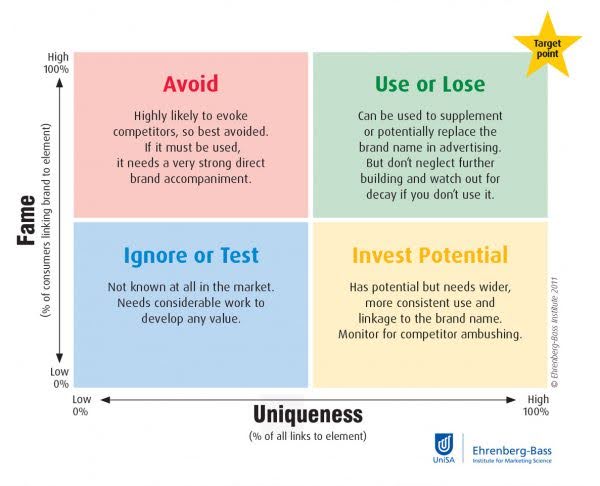
Source: Ehrenberg-Bass Institute
Ideally, you want to be in the top right quadrant of the grid—Use or Lose—where both Fame and Uniqueness are above 50%. If you're approaching 100% on both variables, you've built strong distinctive brand assets that can often serve as a substitute for the brand name in large parts of your communication. But don’t forget: you also need to continuously build these assets for new buyers entering your category. If your assets sit just above the 50% mark, it's important to keep focusing on growing Fame—by consistently using the assets alongside your brand name.
Another interesting quadrant that signals strong potential for your distinctive brand assets is the bottom right—Invest Potential—where Uniqueness is above 50%, but Fame is still below 50%. This means consumers largely associate your brand assets exclusively with your brand and don’t confuse them with competitors—good job! Now the focus should shift to increasing Fame by reaching as many category buyers as possible. In practice, this means placing your distinctive brand assets near the brand name in all your communications. In video formats, ideally show them right at the beginning and repeatedly throughout. Sure, it might sometimes feel a bit forced—but memory structures are only built through consistent repetition of the same elements, over and over again.
On the other hand, the bottom left quadrant—Avoid Solo Use—should raise concern. Here, Fame is above 50%, but Uniqueness is below 50%. While your brand assets may be widely recognized, their impact is diluted because competitors benefit from similar associations. These are typically generic assets tied to the category itself—like soft blue shapes for yogurts, red for ketchup, or bird silhouettes for airlines. If your brand holds a smaller market share than competitors using similar distinctive brand assets, it’s usually better to stop relying on those assets and start developing new, more unique ones.
If you're a new brand and you fall into the bottom left quadrant—Ignore or Test—there’s no need to panic. Low Fame and Uniqueness scores may simply reflect that not enough people know you yet—let alone recognise your distinctive brand assets. However, if you've been on the market for some time, use your assets consistently in communication, and are reaching a large share of category buyers, then you've likely chosen the wrong assets. Not every asset has the potential to be memorable—they may be too subtle or overly sophisticated. This is where a creative (or neuroscience-savvy) expert comes in to help design new, memorable distinctive brand assets.
We’ve defined distinctive brand assets for Wobenzym, Strike TV, and Yolab. Shall we create yours too?






